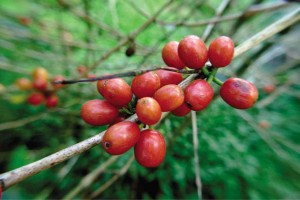
MINDANAO now accounts for as much as 70 percent of the country’s total coffee production and it is ready to produce even more.
Think about the heady aroma of coffee and what will likely come to mind immediately is Batangas or Cavite when thinking about where it comes from in the Philippines.
That may have been true during the Spanish period, but not anymore, for the bulk of the coffee produced in the Philippines now comes all the way from the island of Mindanao, the country’s second largest island after Luzon.
In fact, Mindanao now accounts for as much as 70 percent of the country’s total coffee production and it is ready to produce even more.
This was made apparent during the recently held National Coffee Summit spearheaded by the Philippine Coffee Board Inc., a non-profit organization set up to promote local coffee production and boost incomes of farmers all over the country.
During the well-attended summit, government leaders such as South Cotabato Governor Daisy Avance Fuentes offered the province to investors, and gave the crowd a rundown of the reasons why it was a great idea to invest in her province.
Polomolok, the so-called town that pineapple made, was likewise offered as a potential investment site by Mayor Honey Lumayag-Matti.
She said there were incentives available to entrepreneurs who want to set up coffee-based businesses in her town of 23 barangays and 200,000 people.
Both local executives assured potential investors of their safety and security considering how large businesses have long been operating in the province with little difficulty.
They also spoke of the easy accessibility to the province through the modern General Santos City airport.
Coffee grows particularly well on Mt. Matutum, which straddles the provinces of Sarangani and South Cotabato.
The microclimate there is deemed perfect for growing specialty Arabica, the variety sought by local and foreign coffee buyers because of its fine taste and sweet aroma.
Aside from the growers and farmers, the annual summit also featured technical experts like Dr. Dave D’Haeze, a specialist in Robusta coffee, who shared his experience in Vietnam.
MINDANAO now accounts for as much as 70 percent of the country’s total coffee production and it is ready to produce even more.
Vietnam is now the second largest producer of coffee, after Brazil.
Dr. D’Haeze visited local farms and assured the coffee investors that the soil and climate in Mindanao were perfect for producing quality coffee that would find ready markets here and abroad.
In the area of Arabica coffee, there is great potential to find in Mindanao more cupping contest winners, like the Kapatagan Arabicas that won during the Roasters Guild contest in Thailand last April.
Philippine coffees won two awards, just behind Indonesia, the world’s fourth largest coffee exporter.
The high scores given by international judges to the local coffee raised hopes that Mindanao can produce even more quality coffee, given the right government and private sector support.
Today, sadly, the Philippines produces only 22,000 metric tons of coffee at best, with only 10 percent qualified as specialty grade.
The numbers may be disappointing, but there are many reasons to be encouraged.
At the end of the coffee summit, every potential investor who attended was convinced of the viability of investing in coffee farming and processing in Mindanao.
There is, indeed, money to be made in Mindanao’s growing coffee sector.